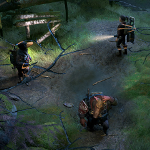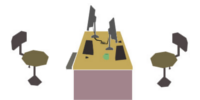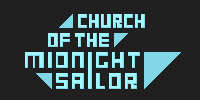Interview: Mutant Year Zero: Road to Eden’s Mark Parker
As a child of the ’80s, the notion that a team of anthropomorphic animals must work together to vanquish evil feels like second nature, and in The Bearded Ladies’ Mutant Year Zero: Road to Eden, players guide an unlikely trio through post-apocalyptic terrain in the search for answers. With FUNCOM on board as the publisher, I chatted with studio producer Mark Parker.
Erik Meyer: MYZRTE guides players through XCOM-inspired turn-based tactical combat, with mutations, specialized equipment, and unique character abilities leading the way through a post-apocalyptic setting, so from a mechanics and an experience POV, what aspects of the project set it apart from games with a similar perspective, and as designers, how do you go from solid assets to a well-oiled machine?
Mark Parker: Whilst of course there are comparable elements to XCOM and other tactical games, we wanted to stand out from the crowd somewhat by incorporating a solid feeling of adventure, not just a succession of tactical encounters. Therefore, we have a real-time element that allows the player to employ stealth and a certain degree of pre-planning before entering combat, and the transition between real-time and tactical gameplay is smooth and dynamic. It’s about giving the player a choice of how they tackle each situation (something we know about from working on Hitman) and also allowing them to explore the rich world we have created. Regarding the process of making it a slick-feeling and satisfying experience, it’s mainly down to playing, tweaking and playing some more. In addition, Rui (CEO of FUNCOM) is a hardcore player of tactical games, and he regularly gives us feedback regarding difficulty, timings, visual cues, etc.
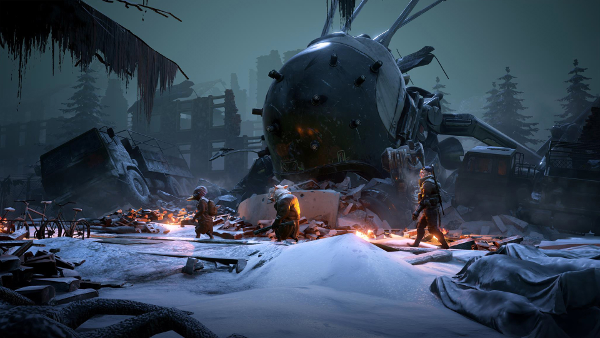
EM: Long before the announcement of MYZ as a videogame, the pen-and-paper RPG already had a devoted following, so can you speak to the bridge between what you’re doing and the traditions it comes out of? Additionally, what expectations come with a universe that people already know and love?
MP: Well firstly, it’s impossible to please everyone, and whilst the temptation was there to add a lot more of the RPG elements from the books into our game, we knew that attempting to replicate a pen and paper experience in a videogame is never really going to satisfy everybody; by its very nature, a pen and paper game is a very free-form social experience where (besides the core ruleset) the players’ imaginations are literally the limit. So we decided to make a tactical adventure game set within the rich world from the books, and we felt that this genre fit the universe nicely and that there is a certain degree of ‘dice rolling’ in this type of game. As for the universe, we try to make sure everything we include fits well with the books; there are obviously some things we wanted to explore or add that the books don’t cover entirely, so there is a small amount of ‘artistic license’, and many of the team members have been long-time players of the Mutant games, so they also keep to canon.
EM: In the gameplay footage that has been released, devs spoke to characters misunderstanding history, so a statue of a high school mascot might be mistaken for a demon, for example. As the game’s narrative has developed, how do you see the setting informing the storyline, and what other things have come from this process that either surprised you or provided depth to the culture of the PCs?
MP: The idea of everyday items or locations from our ‘current’ age being misconstrued by peoples living far in the future is very appealing. We tried to avoid ‘obvious’ humor in the dialogue in favor of more ironic moments that would entertain the player but be deadly serious from the characters’ perspective. A good example of this irony is early on in the game where Dux and Bormin discover a functioning ‘Boom Box’ radio and naturally misinterpret it as a bomb. The ghouls are also supposed to talk and act quite a bit differently than the mutants; there is a good reason for this which we won’t go into at this time.
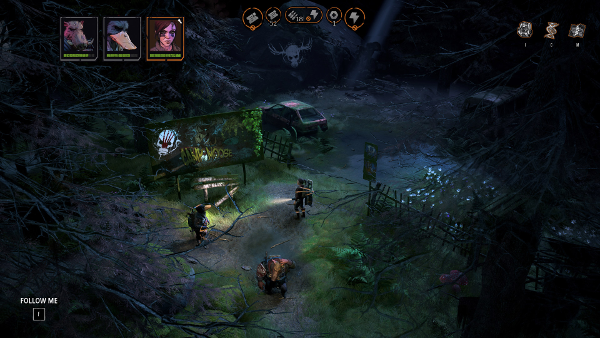
EM: In the 1980s, Mutant, After the Bomb, Gamma World, Road Hogs, and various other RPGs speculated about post-apocalyptic scenarios in which mutated humanoid animals would live and struggle to find meaning, so what do you see as the inspiration for the inclusion of near-human creatures in these varied wastelands? Was it simply a safe way to explore Cold War paranoia, or do you see something else at work?
MP: I think this is more of a question for the folks over at Fria Ligan (The Free League) as they run the pen and paper side of things, and as you mention, it’s been a recurring theme over the years, which was taken a bit further with the Mutant: Year Zero Genlab Alpha rulebook and campaign. I guess that having something a bit more than just haggard ‘Mad Max’ humans in the post-apoc world was a good way to diversify character types and classes even further.
EM: The game’s cinematic trailer and gameplay footage show off the project’s assets and polish, so as you fine tune and add Easter eggs, how do you maintain fresh eyes, even while looking at bug fixes, balance issues, and optimization across different hardware configurations? Which things eat up the most time?
MP: Fresh eyes are always hard to find internally, especially when the team has been working on something for quite a while. We do encourage our friends, families, contractors, and QA to give feedback on anything they wish. Balancing is probably the most time-consuming process; it takes a lot of playing through, analyzing, and tweaking, and we generally bugfix as often as possible to avoid the ‘avalanche’ of bugs piling-up for the end of the project that other development teams need to deal with. Regarding optimization, based upon prior experiences on projects at other developers (which shall not be named), we have been very mindful of performance and how troublesome it can be to get a PC game running and looking good on all platforms. In fact, we have a number of machines with comparable specs to current gen consoles that we refer to frequently. Lastly, regarding Easter-eggs, with substantial Easter-egg experience from the HITMAN games, I personally feel that a game without at least a couple of Easter eggs is not worth shipping.
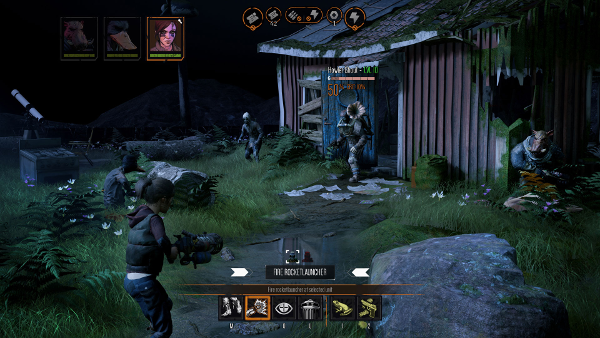
EM: The ability to sneak takes an important role, rewarding reconnaissance (such as characters covertly resetting a robot to factory programming and pitting it against everything in its path); as devs, what other play styles do you find yourselves creating rewards for, and how do those styles in turn effect narration and the game’s overall arc?
MP: Absolutely, the stealth aspect has a big part to play in creating the outcome of the ensuing battles; of course, some players will still march right into the middle of the camp and all hell will break loose, so we try and give people an enjoyable experience however they choose to approach a situation. Having satisfying mechanics is key to this, and the way the tactical combat works can feel really rewarding, even if the odds are pitted against you. Learning how the different classes of enemy act and how you can deal with what looks like an impossible situation is a puzzle which can make you feel really great if it all pans out. We often play the game together with a beer or two, and it’s enjoyable to discuss the tactics as a group. For the most part, the story arc is not affected by how good or bad you are at the game, although there are hidden areas, scenarios, and items that you will discover if you explore the world.
EM: I’m interested in the connection between The Bearded Ladies and FUNCOM, in terms of coordination, resources, know-how, etc, so as entities with established cultures, how do you interact, and in general, as you add and balance game elements, what do those decisions look like, from a team perspective?
MP: FUNCOM is our publisher, and naturally they are really invested in the game, but apart from a regular weekly sync, they mostly leave us alone to do our own thing. However, as mentioned earlier, Rui Casais (FUNCOM’s CEO) is an avid tactical gamer who finds time to play the game quite frequently. He follows each play session up with a list of feedback which Lee (Game Director) and I discuss with him. There is also a group of hardcore tactical players at the FUNCOM offices that Rui has threatened to unleash upon the build very soon, so there will be a lot of solid feedback for us to run through. We have an extremely good relationship with FUNCOM, and it’s good to know they have our backs; they also develop games themselves, so there are ways in which they are able to help us in certain situations. Plus, the Marketing team have been doing a fantastic job!
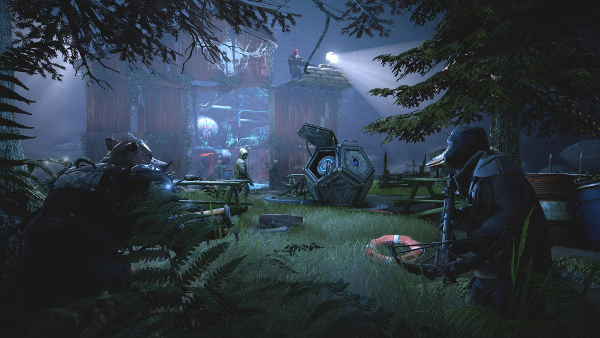
EM: Like cartoon characters, having animal-based protagonists means the audience will anticipate personality traits, such as Bormin having a short temper or Dux having a silly disposition. As the game progresses, real dilemmas will put surface traits to the test, so what freedoms and added benefits come with the beastly aspects of the squad, and what writing hurdles do you have to overcome?
MP: We really wanted to avoid the completely stereotypical approach of making them cartoony. In fact, during dialogue recording, we had to re-take a number of Dux’s lines, as he had too much of a ‘Teenage Mutant Ninja Turtles’ vibe that kinda made him sound goofy. These are serious characters who are trying to scrape a life together in an incredibly dangerous world. That being said, we do have a bit of banter between the characters during the game which lightens the mood somewhat. One thing that John Zurhellen (Writer) said in one of our initial meetings was that he wanted to be able to take a script, hide the character’s name, and for people to easily identify which character is speaking just from the written line, and I think that has been achieved.
In case you missed it, here’s the trailer:

